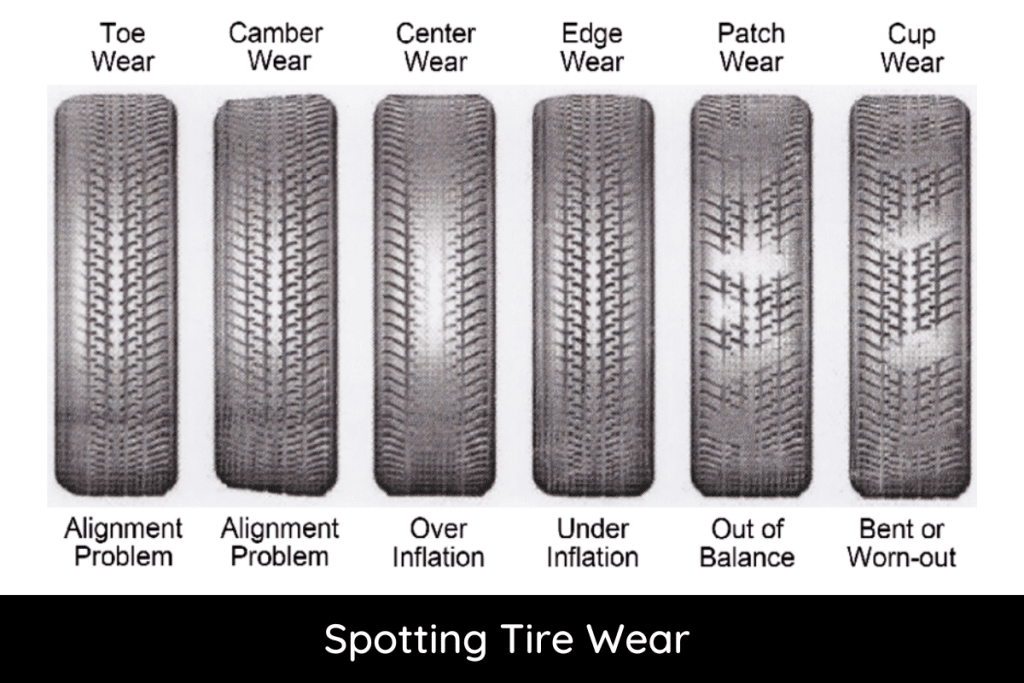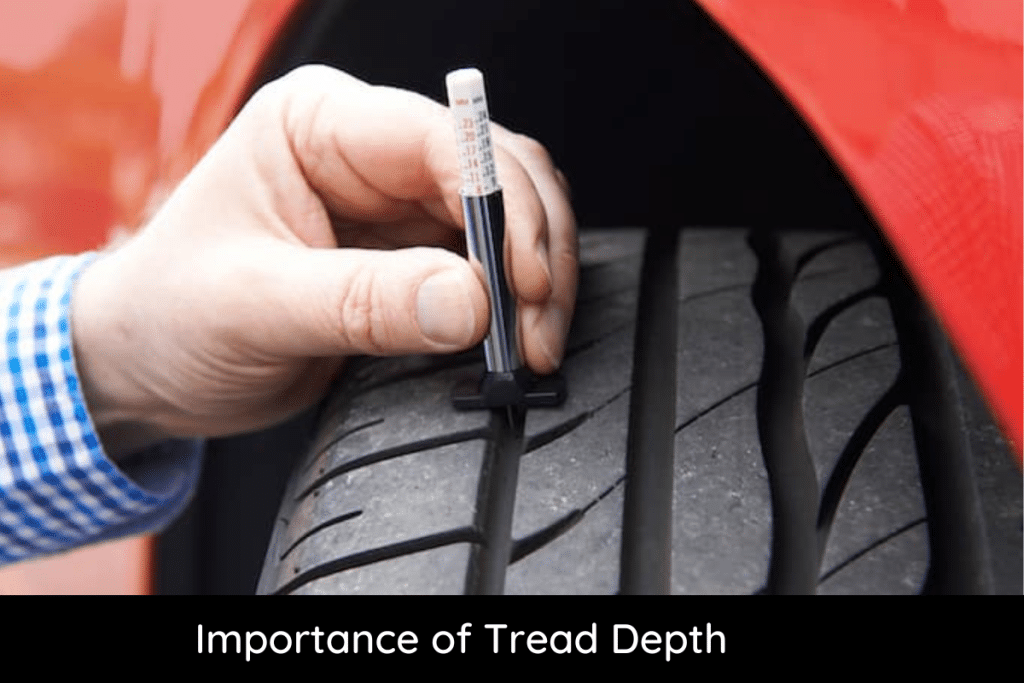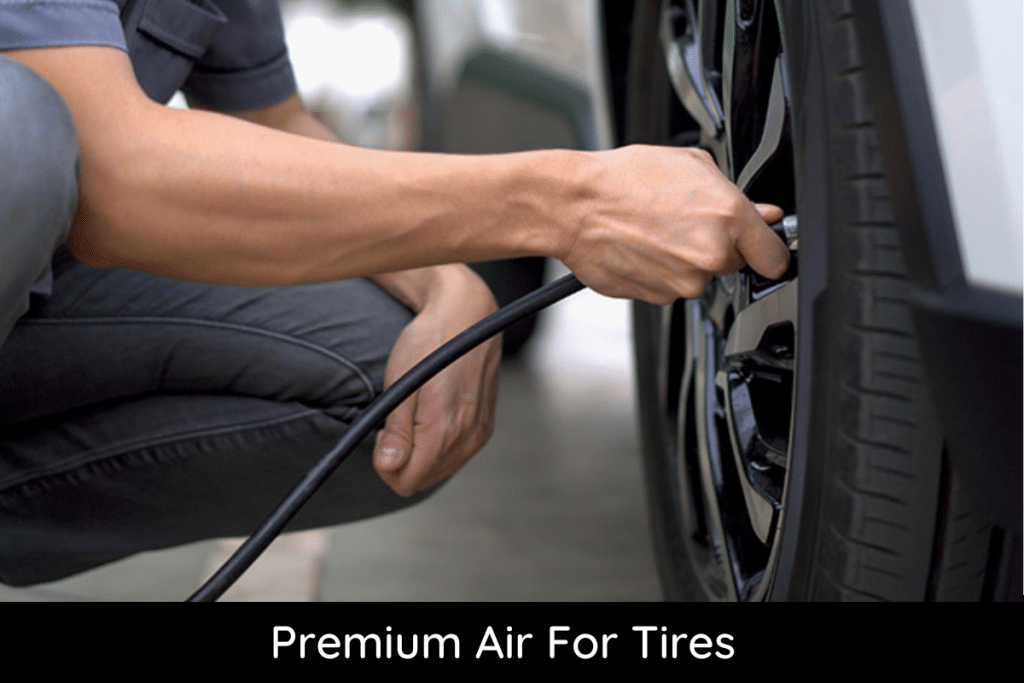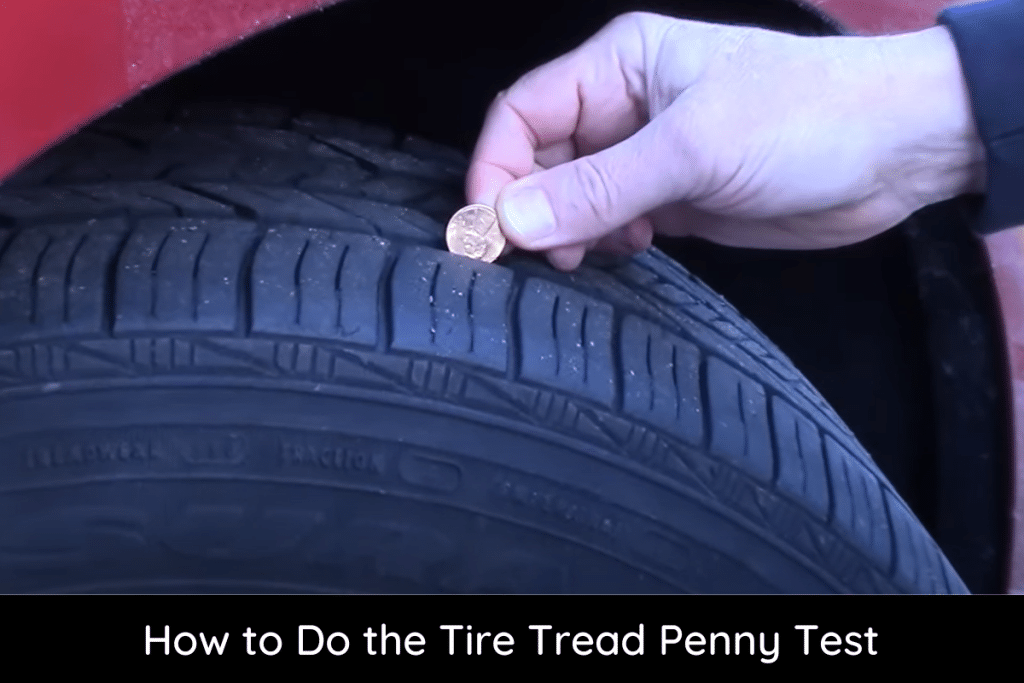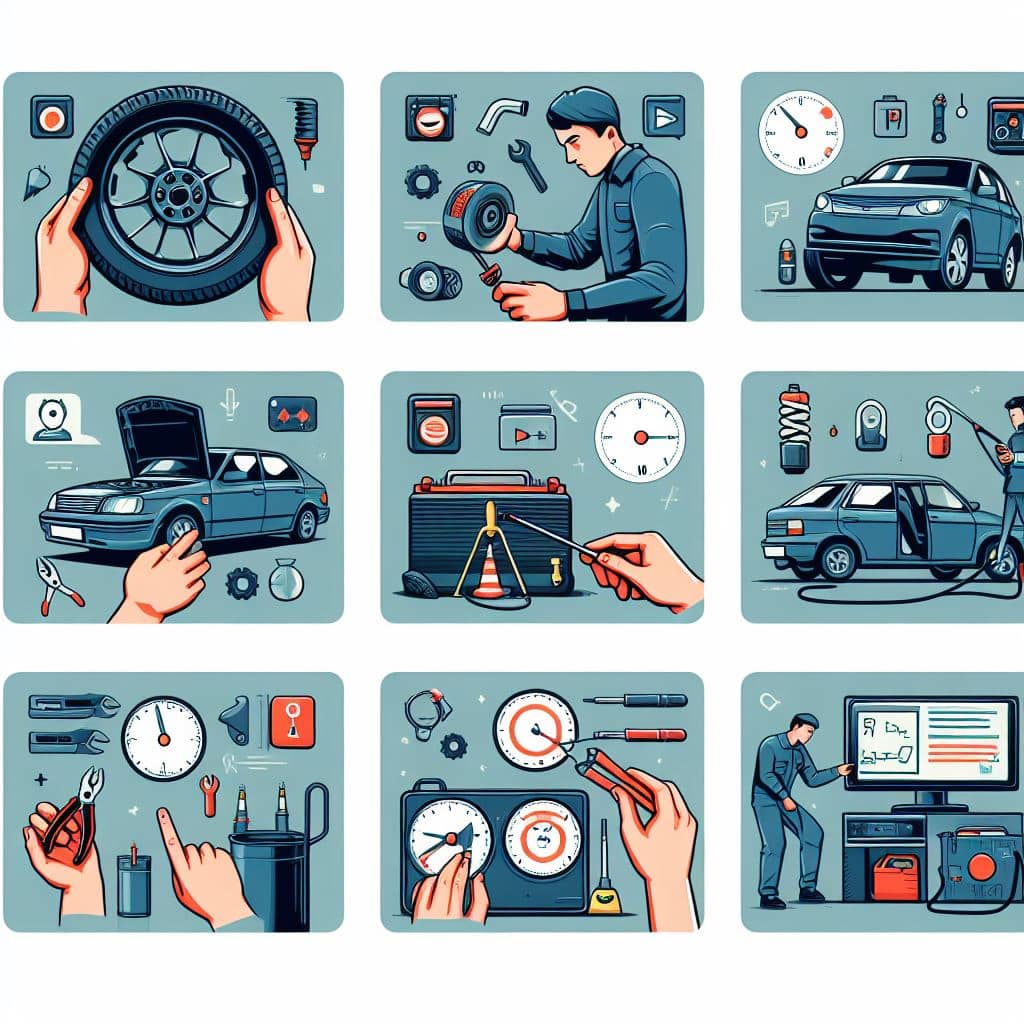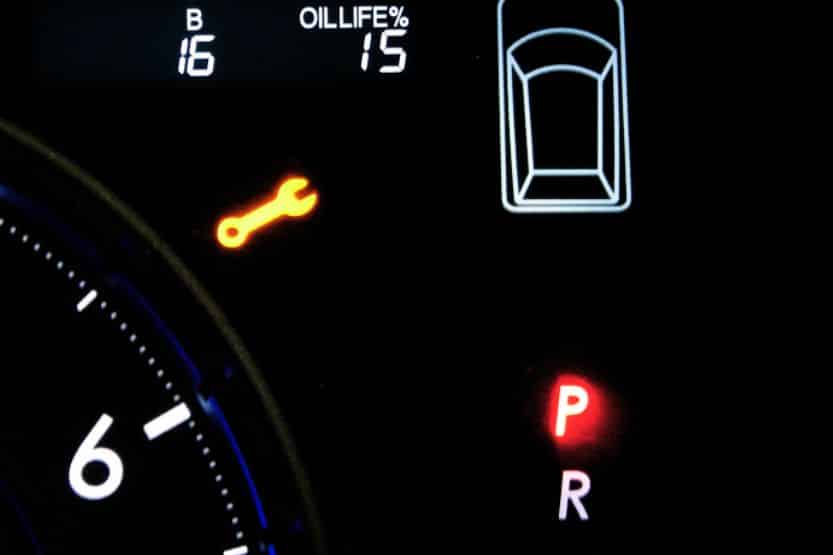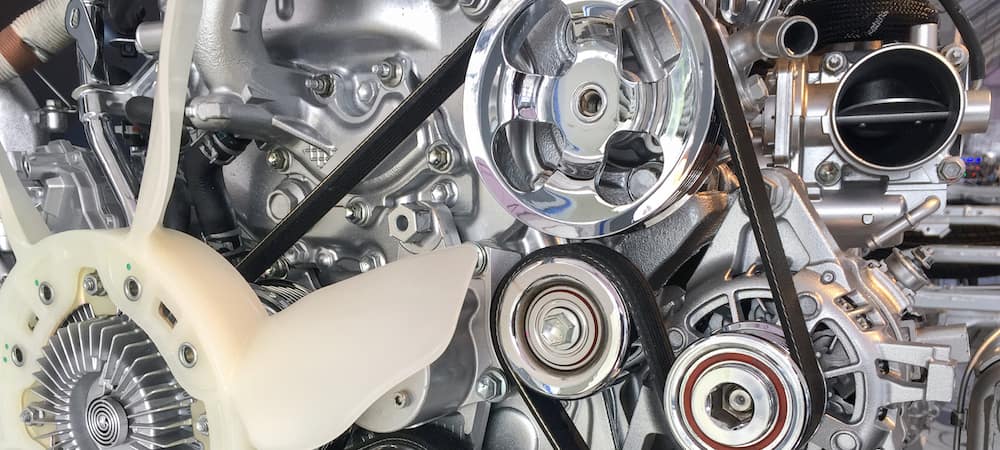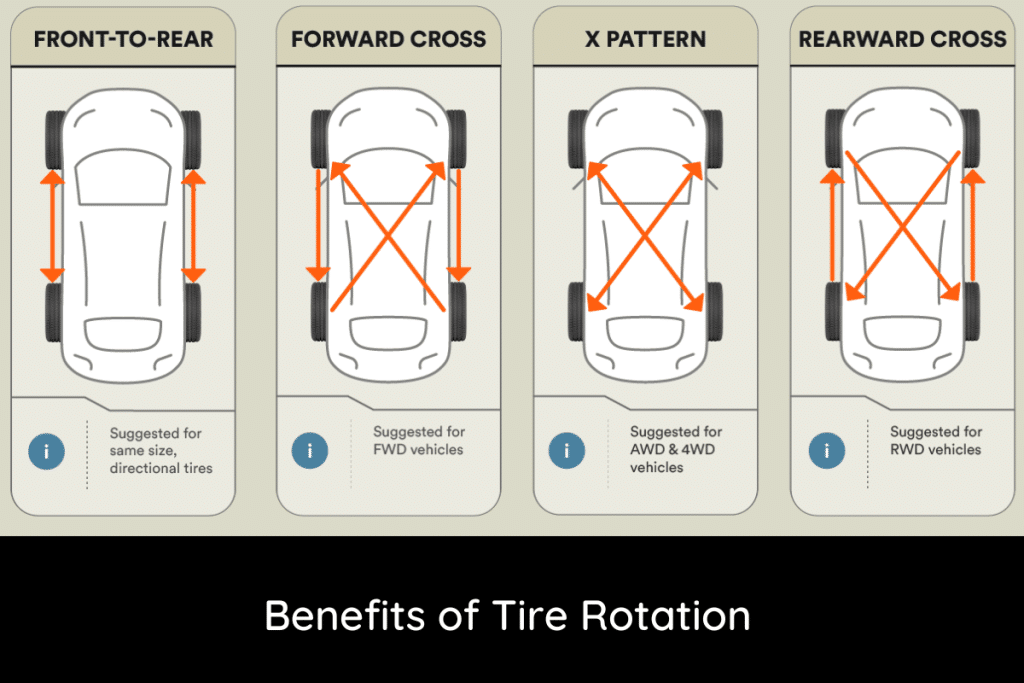
Tire rotation offers several significant benefits that contribute to improved safety, comfort, and longevity of your tires:
- Extended Tire Life: Regular tire rotation prevents uneven wear, allowing tires to last longer since their tread wears more evenly.
- Safer Ride: With even tread wear, tires perform better in wet conditions, reducing the risk of hydroplaning and improving overall grip.
- Comfortable Ride: An evenly worn set of tires provides a smoother, more comfortable driving experience.
- Reduced Noise: Properly rotated tires produce less noise during operation.
- Better Fuel Efficiency: Even tread wear reduces drag and improves fuel economy.
- Improved Handling and Steering Response: Well-maintained tires allow for better handling and quicker emergency reaction times.
- Safety: Consistent tire rotation ensures that all tires wear evenly, minimizing the risk of accidents caused by uneven tread depth.
- Cost Savings: Rotating tires saves money by extending their lifespan and preventing premature replacement.
According to manufacturer guidelines, rotating tires every 5,000–7,000 miles (8,000 km) is generally advised.
How Often Should You Rotate Your Tires
Most vehicle manufacturers recommend getting your tires rotated approximately every 5,000 miles or six months. However, the exact number may vary depending on how, where, and what you drive.
Some vehicles may require more frequent tire rotations, while others may be able to go longer between rotations. It’s always best to refer to your owner’s manual for specific recommendations for your vehicle.
Regular tire rotation prevents uneven wear, allowing tires to last longer since their tread wears more evenly.
Tire rotation is a maintenance practice that involves changing the positions of a vehicle’s tires to achieve uniform wear across all tires. This process is essential for extending the life of your tires, improving vehicle performance, and maintaining safety on the road.
Regularly rotating your tires ensures that each tire wears evenly, preventing the common problem of one or more tires wearing down faster than the others.
The Process of Tire Rotation
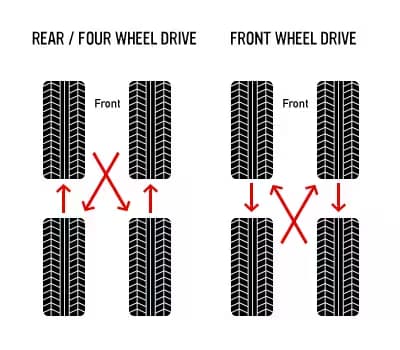
The process typically involves moving the front tires to the rear and the rear tires to the front. However, the pattern can vary based on the type of vehicle, the drive train, and whether the tires are directional or non-directional.
The most common rotation patterns include:
- Front-to-Rear: The most straightforward pattern, where the front tires move to the rear, and the rear tires move to the front, often used for vehicles with non-directional tires.
- Side-to-Side: In this pattern, tires are swapped from one side of the vehicle to the other, suitable for vehicles with directional tires that are designed to rotate in one direction.
- X-Pattern: This involves diagonally swapping the front and rear tires (front left to rear right and front right to rear left), common in vehicles with non-directional tires and a front-wheel drive system.
- Rearward Cross and Forward Cross: These patterns are used for four-wheel and all-wheel-drive vehicles. The rearward cross moves the rear tires to the front in a straight line while crossing the front tires to the rear opposite sides. The forward cross does the opposite, which is suitable for vehicles with different wear patterns between the front and rear tires.
Different Patterns for Different Vehicles and Tires
- Front-Wheel Drive (FWD): For these vehicles, front tires wear out faster due to steering and propulsion forces. A forward cross or X-pattern rotation is often recommended.
- Rear-Wheel Drive (RWD) and Four-Wheel Drive (4WD): These vehicles might benefit more from a rearward cross pattern, as the rear tires experience different wear patterns than FWD vehicles.
- All-Wheel Drive (AWD): AWD vehicles require special attention as all tires work together for propulsion, making an X-pattern or modified cross pattern ideal to ensure even wear.
- Directional Tires: Vehicles with directional tires that rotate in one direction should follow a side-to-side rotation pattern to maintain the tire’s directional integrity.
- Non-Directional Tires: These tires can be rotated in any pattern since they are not limited by rotation direction, allowing more flexibility in rotation patterns to achieve even wear.
Understanding the correct tire rotation pattern for your vehicle and type of tires is crucial for maximizing tire life and vehicle performance.
Regular tire rotation, as part of your vehicle’s maintenance schedule, ensures that your tires wear evenly, extending their lifespan and maintaining the safety and efficiency of your vehicle on the road.
Benefits of Tire Rotation
Extended Tire Life
One of the most significant benefits of regular tire rotation is the extension of your tires’ lifespan. By rotating your tires, you ensure that wear is evenly distributed across all four tires.
This even distribution of wear prevents the uneven tire wear patterns that can occur when tires remain in the same position on the vehicle for too long. Unevenly worn tires can lead to premature tire failure and necessitate early replacement.
Regular tire rotation, typically every 5,000 to 8,000 miles, as recommended by most manufacturers, can significantly extend the life of your tires by preventing these uneven wear patterns.
Improved Vehicle Performance
Even tire wear, achieved through regular tire rotation, positively impacts vehicle performance. First, it ensures better traction on the road, as tires wear down uniformly, maintaining the tread depth evenly across all tires. This is crucial for optimal grip and braking performance.
Secondly, it contributes to improved handling and stability, as uneven wear can lead to vibrations and a decrease in the predictability of the vehicle’s handling. Evenly worn tires provide a smoother ride and more consistent handling, enhancing the overall driving experience.
Enhanced Fuel Efficiency
The condition of your tires can significantly affect your vehicle’s fuel efficiency. Even tire wear, achieved through regular rotation, reduces rolling resistance—the force resisting the motion when a tire rolls on a surface.
Lower rolling resistance means your vehicle doesn’t have to work as hard to move forward, leading to improved fuel efficiency. In contrast, unevenly worn tires can increase rolling resistance due to uneven weight distribution and imbalance, causing your vehicle to consume more fuel.
Increased Safety
The safety benefits of tire rotation cannot be overstated. Evenly worn tires maintain optimal contact with the road, which is vital for safe braking and cornering. Furthermore, regular tire rotation helps identify and address tire issues before they lead to failure.
Tires that are worn unevenly can compromise vehicle stability, especially in adverse weather conditions, increasing the risk of accidents.
Tire rotation contributes to predictable vehicle behavior by ensuring your tires wear evenly, reducing the risk of road-related incidents.
Cost Savings
The financial implications of regular tire rotation are twofold. Firstly, by extending the life of your tires, you delay the need for tire replacements, directly saving money on new tires over the life of your vehicle.
Secondly, the improved fuel efficiency resulting from reduced rolling resistance translates to savings at the gas pump.
These cost savings and enhanced safety and performance benefits make tire rotation a financially wise maintenance practice for any vehicle owner.
In summary, the practice of regular tire rotation offers many benefits, from extended tire life and improved performance to enhanced safety and significant cost savings.
Incorporating tire rotation into your regular vehicle maintenance schedule is a simple yet effective way to maximize these benefits, ensuring your vehicle remains safe, efficient, and enjoyable to drive.
Signs You Need a Tire Rotation
Recognizing the signs that your tires need to be rotated is crucial for maintaining your vehicle’s performance and safety. Regular inspection of your tires can help you identify these signs early, ensuring timely maintenance.
Here are some common indicators that suggest it’s time for a tire rotation:
Uneven Tire Wear
One of the most obvious signs that your tires need to be rotated is uneven wear patterns among them. You might notice that the front tires have worn down more on the edges while the rear tires show a more uniform wear pattern, or vice versa.
This uneven wear can lead to reduced traction and an increased risk of tire failure.
Vibration While Driving
Experiencing unusual vibrations while driving, especially at higher speeds, can indicate uneven tire wear.
When tires wear unevenly, they can cause the vehicle to vibrate due to the imbalance. Rotating your tires can help even out the wear and reduce or eliminate these vibrations.
Reduced Traction or Slippery Handling
If you notice that your vehicle is not handling as well as it used to, especially in wet conditions, it could be due to uneven tire wear.
Tires with uneven wear may not grip the road effectively, making the vehicle feel slippery or harder to control. Tire rotation can help restore even wear and improve traction.
Noise from Tires
Uneven tire wear can lead to increased road noise. If you start to hear a humming or buzzing sound coming from your tires that wasn’t there before, it might be time to check for uneven wear and rotate your tires.
The noise is caused by the uneven contact of the tire tread with the road surface.
Visual Inspection
Regularly inspecting your tires can reveal signs of uneven wear that might not yet have led to noticeable driving disturbances.
Look for differences in the tread depth across different parts of each tire and between the tires. If you see significant variances, it’s likely time for a tire rotation.
Ignoring these signs can lead to further tire damage, reduced vehicle safety, and ultimately, more expensive repairs or replacements.
Incorporating tire inspections into your regular vehicle maintenance routine and addressing these signs promptly through tire rotation can help ensure your vehicle remains safe, efficient, and enjoyable to drive.
DIY Tire Rotation vs. Professional Service
Deciding between a DIY tire rotation and a professional service involves weighing the benefits and drawbacks of each option.
Both methods aim to ensure even tire wear and extend the life of your tires, but they come with different considerations.
DIY Tire Rotation
Pros:
- Cost Savings: Performing a tire rotation yourself can save you the service fee charged by a professional. This is particularly beneficial for those on a tight budget.
- Convenience: You can do it on your own schedule without making an appointment or waiting for the service to be completed.
- Learning Experience: It provides an opportunity to learn more about your vehicle’s maintenance, fostering a greater understanding of how it works.
Cons:
- Equipment and Space Requirements: You need to have the right tools (jack, jack stands, tire iron) and a safe, level space to perform the rotation.
- Physical Effort: It requires physical labor and comfort with using the necessary tools.
- Risk of Mistakes: Without the proper knowledge, there’s a risk of doing it incorrectly, which could affect your vehicle’s performance or safety.
Tips for DIY:
- Ensure Safety: Use a flat, stable surface and securely lift the car with jack stands.
- Follow the Correct Pattern: Know the recommended rotation pattern for your vehicle and tire type.
- Check Tire Pressure: Adjust the tire pressure to the recommended levels after rotation.
- Inspect Tires: Look for any signs of damage or excessive wear and address any issues you find.
Professional Service
Pros:
- Expertise: Professionals have the knowledge and experience to correctly rotate your tires, including recognizing wear patterns and potential issues.
- Convenience: There is no need for physical labor; the service is performed quickly and efficiently.
- Additional Services: Many service centers include a tire rotation as part of a general inspection, offering a comprehensive check-up of your vehicle.
Cons:
- Cost: Professional services come with a fee, which can add up over time.
- Scheduling: You may need to schedule an appointment and arrange transportation if you leave your vehicle at the shop.
Advice for Choosing a Professional Service:
- Read Reviews: Look for highly rated service centers with positive customer feedback.
- Compare Prices: Shop around to find the best service for a reasonable price.
- Ask About Included Services: Some places offer tire rotation as part of a package deal, providing better value.
- Certifications: Choose a service center with certified technicians to ensure high-quality service.
Whether you choose to rotate your tires yourself or opt for professional service depends on your comfort level, experience, and priorities. If you go the DIY route, prioritize safety and follow your vehicle manufacturer’s guidelines closely.
If you choose professional service, select a reputable provider to ensure your vehicle receives the best care.
Common Myths About Tire Rotation
Tire rotation is surrounded by various myths and misconceptions that can deter vehicle owners from performing this essential maintenance task.
Here are some common myths about tire rotation, debunked to clarify misunderstandings and emphasize its importance:
Myth 1: Tire Rotation Is Not Necessary for Modern Vehicles
Reality: Despite vehicle and tire technology advancements, tire rotation remains crucial for all vehicles. Modern vehicles still distribute weight unevenly, leading to differential wear patterns on tires.
Rotation ensures even wear, extending tire life and maintaining vehicle performance and safety.
Myth 2: All Tires Wear the Same, So Rotation Isn’t Needed
Reality: Tires wear differently based on their position on the vehicle. Front tires, for example, bear more weight due to the engine and undergo additional stress from steering, leading to wear faster.
Rotating tires ensures that this wear is evenly distributed, preventing premature tire replacement.
Myth 3: Tire Rotation Affects Tire Balancing
Reality: Tire rotation and balancing are two distinct services. Rotation involves changing the tires’ positions while balancing, ensuring the weight is evenly distributed around the wheel.
Rotating tires does not disturb the balance; however, it’s often recommended to have tires balanced during rotation for optimal performance.
Myth 4: You Can Only Rotate Tires on the Same Axle
Reality: The most effective tire rotation patterns involve moving tires both front to back and side to side, depending on the vehicle’s drivetrain and the type of tires.
Sticking to one axle for rotation does not provide the full benefits of the service, such as extended tire life and improved handling.
Myth 5: DIY Tire Rotation Is Just as Good as Professional Service
Reality: While it’s possible to rotate tires yourself, professional services offer added benefits, including the expertise of trained technicians who can identify and address issues beyond uneven wear.
Professionals can also ensure the rotation pattern is appropriate for your vehicle’s specific needs.
Myth 6: Frequent Tire Rotations Cause More Wear
Reality: Some believe rotating tires too often can lead to additional wear. However, the opposite is true; regular rotation helps distribute wear evenly evenly, reducing the strain on any single tire and extending the overall life of the tire set.
By debunking these myths, vehicle owners can better understand the importance of tire rotation and why it should be a regular part of vehicle maintenance.
Regular tire rotation not only extends the life of your tires but also contributes to safer and more efficient driving.
FAQ Section: Tire Rotation
How often should I rotate my tires?
Most vehicle manufacturers recommend rotating your tires every 5,000 to 8,000 miles or at the same interval as your oil change. However, consult your vehicle’s owner manual for specific recommendations.
Can tire rotation fix vibration issues?
Tire rotation can help eliminate vibrations caused by uneven tire wear. However, if vibrations persist after rotation, it may indicate other issues such as wheel misalignment or balance problems.
Is tire rotation necessary for all-wheel drive (AWD) vehicles?
Tire rotation is crucial for AWD vehicles, perhaps even more so than for other types. AWD vehicles can experience faster and more uneven tire wear due to the power being distributed to all four tires. Regular rotation helps ensure even wear across all tires.
Do new tires need to be rotated?
Absolutely. Even new tires should be rotated according to the vehicle manufacturer’s recommended schedule to ensure even wear from the start.
Can I rotate tires myself if my car has a Tire Pressure Monitoring System (TPMS)?
Yes, you can rotate tires on a vehicle with TPMS. However, depending on your vehicle’s model, you may need to reset the system after rotation. Consult your owner’s manual or a professional if you’re unsure.
Does tire rotation pattern matter?
Yes, the rotation pattern is essential and depends on your vehicle’s drivetrain and whether your tires are directional or non-directional. Following the correct pattern ensures optimal tire performance and longevity.
What’s the difference between tire rotation and alignment?
Tire rotation involves changing the position of the tires on your vehicle to ensure even wear. Alignment adjusts the angles of your vehicle’s wheels to ensure they are perpendicular to the road and parallel to each other, optimizing tire life and handling.
Will rotating tires affect my warranty?
Rotating tires will not affect your tire warranty; it’s a requirement under most tire warranties. Failing to rotate tires as recommended can void your warranty.
Can I rotate radial tires in any direction?
Non-directional radial tires can be rotated in any pattern that is recommended for your vehicle type. However, directional tires, designed to rotate in one direction, should only be swapped front to back on the same side of the vehicle.
If my tires show uneven wear, is rotation still advisable?
If your tires show significant uneven wear, it’s essential to understand the cause (such as misalignment) and address it.
While rotation can help even out minor discrepancies in wear, significantly uneven wear might require additional attention or even tire replacement.
Including these FAQs on tire rotation at the end of your article will help address common concerns, making your content more valuable and informative to your readers and thereby enhancing their understanding and maintenance of their vehicles.
Now that you have comprehensive knowledge about the benefits of tire rotation, signs to watch for, and the debunking of common myths, it’s time to take action.
Regular tire rotation is a simple yet crucial aspect of vehicle maintenance that ensures your tires wear evenly, extending their lifespan and maintaining optimal performance and safety on the road.
Don’t wait for the signs of uneven wear or performance issues to prompt your next tire rotation. Proactive maintenance is key to preventing problems before they arise.
Check your vehicle’s maintenance records to see when your tires were last rotated and compare that to your vehicle manufacturer’s recommendations.
If it’s time for a rotation or if you’re unsure, we strongly encourage you to schedule a service with a professional. Choosing a reputable service provider ensures that your vehicle is in expert hands and any additional concerns, such as alignment or tire pressure issues, can be addressed simultaneously.
Remember, maintaining your vehicle’s tires protects your investment and safeguards you and your passengers. Take a moment today to check your tire rotation needs and make an appointment if necessary. Prioritizing this simple task can lead to a smoother, safer ride and save you money in the long run. Your vehicle and your peace of mind are worth it.


